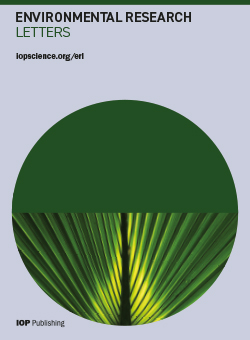Effect of permafrost degradation on grassland net primary productivity in Qinghai–Tibet Plateau
IF 5.6
2区 环境科学与生态学
Q1 ENVIRONMENTAL SCIENCES
引用次数: 0
Abstract
Climate warming poses complex challenges for alpine ecosystems on the Qinghai–Tibetan Plateau (QTP), further exacerbated by permafrost degradation. Quantifying the specific ecological impacts of permafrost thaw remains elusive, as ecological variations are also influenced by external climate factors. This study tackles this gap by employing the Noah-MP model to simultaneously simulate permafrost thermal–hydrological dynamics and net primary production (NPP) across the Three River Headwaters Region from 1989 to 2018. Model results were validated against observations. To isolate the ecological effects of permafrost thaw, we implemented a novel relative time transformation on the simulation results. Our analysis reveals a 7.5 × 104 km2 reduction in permafrost coverage during the study period, coinciding with a 1.09 g C m−2 yr−2 increase in NPP. While precipitation is the primary driver of NPP changes in most years, soil moisture emerges as a crucial factor during permafrost disappearance, when the ground transitions to seasonally frozen ground. Surprisingly, the NPP response to permafrost disappearance exhibited a transient effect, diminishing to negligible levels within five years post-thaw. These findings enhance our understanding of the intricate and dynamic responses of the QTP ecosystem to permafrost degradation under a warming climate.冻土退化对青藏高原草地净初级生产力的影响
气候变暖给青藏高原(QTP)的高寒生态系统带来了复杂的挑战,而永久冻土的退化又进一步加剧了这一挑战。由于生态变化也受到外部气候因素的影响,量化永久冻土融化对生态的具体影响仍是一个难题。本研究采用 Noah-MP 模型,同时模拟了 1989 年至 2018 年三江源地区的冻土热-水文动态和净初级生产力(NPP),从而弥补了这一空白。模型结果与观测结果进行了验证。为了分离永久冻土融化对生态的影响,我们对模拟结果进行了新颖的相对时间转换。我们的分析表明,在研究期间,永久冻土覆盖面积减少了 7.5 × 104 平方公里,同时净生产力增加了 1.09 g C m-2 yr-2。在大多数年份,降水是净生产力变化的主要驱动因素,而在永久冻土消失期间,土壤湿度则成为关键因素,此时地面会过渡到季节性冰冻地面。令人惊讶的是,永久冻土消失时的净吸水能力反应表现出一种瞬时效应,在解冻后五年内减少到可以忽略不计的水平。这些发现加深了我们对气候变暖条件下 QTP 生态系统对冻土退化的复杂动态响应的理解。
本文章由计算机程序翻译,如有差异,请以英文原文为准。
求助全文
约1分钟内获得全文
求助全文
来源期刊

Environmental Research Letters
环境科学-环境科学
CiteScore
11.90
自引率
4.50%
发文量
763
审稿时长
4.3 months
期刊介绍:
Environmental Research Letters (ERL) is a high-impact, open-access journal intended to be the meeting place of the research and policy communities concerned with environmental change and management.
The journal''s coverage reflects the increasingly interdisciplinary nature of environmental science, recognizing the wide-ranging contributions to the development of methods, tools and evaluation strategies relevant to the field. Submissions from across all components of the Earth system, i.e. land, atmosphere, cryosphere, biosphere and hydrosphere, and exchanges between these components are welcome.
 求助内容:
求助内容: 应助结果提醒方式:
应助结果提醒方式:


